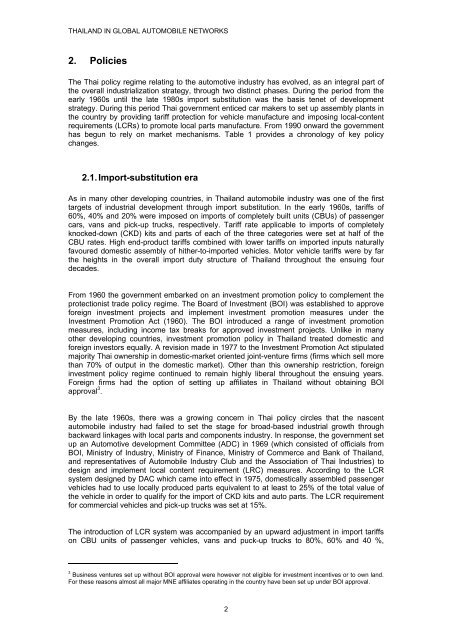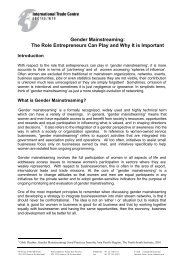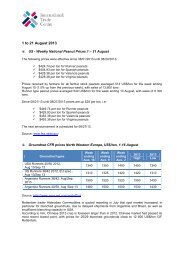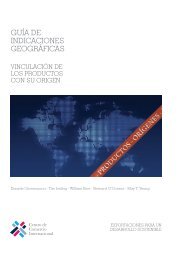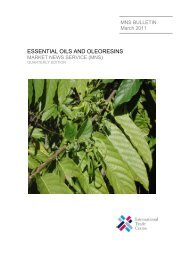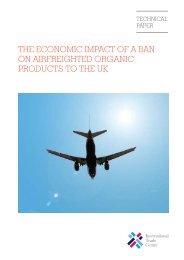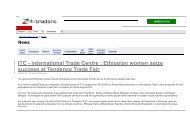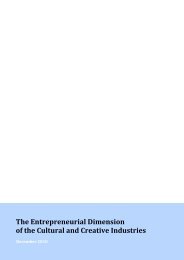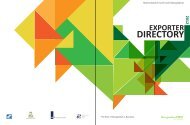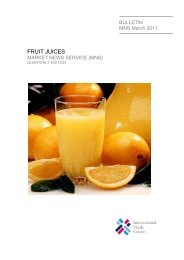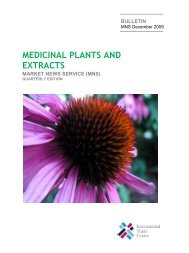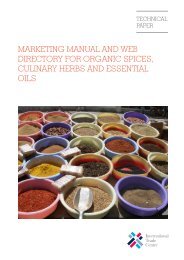thailand in global automobile networks - International Trade Centre
thailand in global automobile networks - International Trade Centre
thailand in global automobile networks - International Trade Centre
You also want an ePaper? Increase the reach of your titles
YUMPU automatically turns print PDFs into web optimized ePapers that Google loves.
THAILAND IN GLOBAL AUTOMOBILE NETWORKS<br />
2. Policies<br />
The Thai policy regime relat<strong>in</strong>g to the automotive <strong>in</strong>dustry has evolved, as an <strong>in</strong>tegral part of<br />
the overall <strong>in</strong>dustrialization strategy, through two dist<strong>in</strong>ct phases. Dur<strong>in</strong>g the period from the<br />
early 1960s until the late 1980s import substitution was the basis tenet of development<br />
strategy. Dur<strong>in</strong>g this period Thai government enticed car makers to set up assembly plants <strong>in</strong><br />
the country by provid<strong>in</strong>g tariff protection for vehicle manufacture and impos<strong>in</strong>g local-content<br />
requirements (LCRs) to promote local parts manufacture. From 1990 onward the government<br />
has begun to rely on market mechanisms. Table 1 provides a chronology of key policy<br />
changes.<br />
2.1. Import-substitution era<br />
As <strong>in</strong> many other develop<strong>in</strong>g countries, <strong>in</strong> Thailand <strong>automobile</strong> <strong>in</strong>dustry was one of the first<br />
targets of <strong>in</strong>dustrial development through import substitution. In the early 1960s, tariffs of<br />
60%, 40% and 20% were imposed on imports of completely built units (CBUs) of passenger<br />
cars, vans and pick-up trucks, respectively. Tariff rate applicable to imports of completely<br />
knocked-down (CKD) kits and parts of each of the three categories were set at half of the<br />
CBU rates. High end-product tariffs comb<strong>in</strong>ed with lower tariffs on imported <strong>in</strong>puts naturally<br />
favoured domestic assembly of hither-to-imported vehicles. Motor vehicle tariffs were by far<br />
the heights <strong>in</strong> the overall import duty structure of Thailand throughout the ensu<strong>in</strong>g four<br />
decades.<br />
From 1960 the government embarked on an <strong>in</strong>vestment promotion policy to complement the<br />
protectionist trade policy regime. The Board of Investment (BOI) was established to approve<br />
foreign <strong>in</strong>vestment projects and implement <strong>in</strong>vestment promotion measures under the<br />
Investment Promotion Act (1960). The BOI <strong>in</strong>troduced a range of <strong>in</strong>vestment promotion<br />
measures, <strong>in</strong>clud<strong>in</strong>g <strong>in</strong>come tax breaks for approved <strong>in</strong>vestment projects. Unlike <strong>in</strong> many<br />
other develop<strong>in</strong>g countries, <strong>in</strong>vestment promotion policy <strong>in</strong> Thailand treated domestic and<br />
foreign <strong>in</strong>vestors equally. A revision made <strong>in</strong> 1977 to the Investment Promotion Act stipulated<br />
majority Thai ownership <strong>in</strong> domestic-market oriented jo<strong>in</strong>t-venture firms (firms which sell more<br />
than 70% of output <strong>in</strong> the domestic market). Other than this ownership restriction, foreign<br />
<strong>in</strong>vestment policy regime cont<strong>in</strong>ued to rema<strong>in</strong> highly liberal throughout the ensu<strong>in</strong>g years.<br />
Foreign firms had the option of sett<strong>in</strong>g up affiliates <strong>in</strong> Thailand without obta<strong>in</strong><strong>in</strong>g BOI<br />
approval 3 .<br />
By the late 1960s, there was a grow<strong>in</strong>g concern <strong>in</strong> Thai policy circles that the nascent<br />
<strong>automobile</strong> <strong>in</strong>dustry had failed to set the stage for broad-based <strong>in</strong>dustrial growth through<br />
backward l<strong>in</strong>kages with local parts and components <strong>in</strong>dustry. In response, the government set<br />
up an Automotive development Committee (ADC) <strong>in</strong> 1969 (which consisted of officials from<br />
BOI, M<strong>in</strong>istry of Industry, M<strong>in</strong>istry of F<strong>in</strong>ance, M<strong>in</strong>istry of Commerce and Bank of Thailand,<br />
and representatives of Automobile Industry Club and the Association of Thai Industries) to<br />
design and implement local content requirement (LRC) measures. Accord<strong>in</strong>g to the LCR<br />
system designed by DAC which came <strong>in</strong>to effect <strong>in</strong> 1975, domestically assembled passenger<br />
vehicles had to use locally produced parts equivalent to at least to 25% of the total value of<br />
the vehicle <strong>in</strong> order to qualify for the import of CKD kits and auto parts. The LCR requirement<br />
for commercial vehicles and pick-up trucks was set at 15%.<br />
The <strong>in</strong>troduction of LCR system was accompanied by an upward adjustment <strong>in</strong> import tariffs<br />
on CBU units of passenger vehicles, vans and puck-up trucks to 80%, 60% and 40 %,<br />
3 Bus<strong>in</strong>ess ventures set up without BOI approval were however not eligible for <strong>in</strong>vestment <strong>in</strong>centives or to own land.<br />
For these reasons almost all major MNE affiliates operat<strong>in</strong>g <strong>in</strong> the country have been set up under BOI approval.<br />
2


